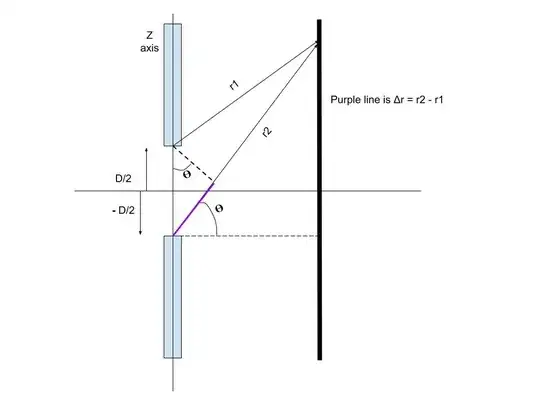In our physics class, the professor went over a so-called "diffraction integral" for single slit diffraction:

$$E = E_0\cos(kx - kct)\qquad\text{then we ignore time dependence}:$$ $$E = E_0\cos(kx)$$ $$\Delta E = E_0 \cos(k\Delta r)$$ $$\Delta E = E_0 \cos(k\sin(\theta)z)$$ $$E = \frac{1}{D} \int_{-D/2}^{D/2} E_0 \cos(k\sin(\theta)z) dz$$ $$E = E_0 \frac{2\sin(k\sin(\theta)D/2)}{k\sin(\theta)D}$$ $$E = \text{sinc}(k\sin(\theta) \frac{D}{2})$$
Can we set up and evaluate such an integral for double slit diffraction? I tried doing so, but I got an answer that doesn't match the commonly accepted equation for double slit diffraction. That commonly accepted equation is $$E = \text{sinc}(k\sin(\theta) \frac{D}{2}) \cos(k\sin(\theta) \frac{D}{2})$$
Any help would be much appreciated. For reference, I've already seen and read the post: Double slit diffraction derivation, and did not understand very much because it uses physics that we haven't been taught yet, like Fraunhofer diffraction.